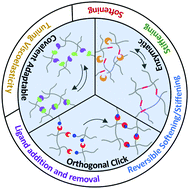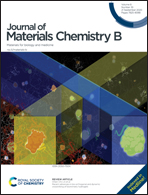Recent advances in bio-orthogonal and dynamic crosslinking of biomimetic hydrogels
Abstract
In recent years, dynamic, ‘click’ hydrogels have been applied in numerous biomedical applications. Owing to the mild, cytocompatible, and highly specific reaction kinetics, a multitude of orthogonal handles have been developed for fabricating dynamic hydrogels to facilitate ‘4D’ cell culture. The high degree of tunability in crosslinking reactions of orthogonal ‘click’ chemistry has enabled a bottom-up approach to install specific biomimicry in an artificial extracellular matrix. In addition to click chemistry, highly specific enzymatic reactions are also increasingly used for network crosslinking and for spatiotemporal control of hydrogel properties. On the other hand, covalent adaptable chemistry has been used to recapitulate the viscoelastic component of biological tissues and for formulating self-healing and shear-thinning hydrogels. The common feature of these three classes of chemistry (i.e., orthogonal click chemistry, enzymatic reactions, and covalent adaptable chemistry) is that they can be carried out under ambient and aqueous conditions, a prerequisite for maintaining cell viability for in situ cell encapsulation and post-gelation modification of network properties. Due to their orthogonality, different chemistries can also be applied sequentially to provide additional biochemical and mechanical control to guide cell behavior. Herein, we review recent advances in the use of orthogonal click chemistry, enzymatic reactions, and covalent adaptable chemistry for the development of dynamically tunable and biomimetic hydrogels.

- This article is part of the themed collection: Bioorthogonal and click chemistry: Celebrating the 2022 Nobel Prize in Chemistry


 Please wait while we load your content...
Please wait while we load your content...